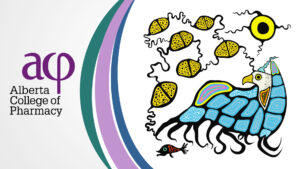Nearly 700 Albertans died last year due to an accidental drug overdose related to an opioid. Tackling the opioid crisis is a priority for health care professionals, as Canada is the world’s second highest consumer of prescription opioids.
Managing pain is important, but what if some of these patients were prescribed a different type of pain management rather than opioids? It would be an opportunity to decrease the number of patients being exposed to that first dose of addictive opioids. Michael Heitshu is the chair of The Coalition for Safe and Effective Pain Management (CSEPM). He believes the rapid rise in opioid prescriptions is from common pain conditions like back pain, neck pain, and fibromyalgia.
The CSEPM was formed in 2017 to improve access to non-pharmacological pain management in the health care system which could lead to a more balanced approach. “The solution to this crisis is not simply prescribing opioids less,” says Michael.
“Compassion demands that patients who truly benefit from opioids are able to get them.”
Instead, Michael would like to see alternatives explored before considering opioids for many non-cancer pain conditions.
In November of 2017, the CSEPM group released a report recommending alternatives such as psychology, chiropractic, occupational therapy, and physiotherapy be used where appropriate.
“It’s our perspective that psychology can assist in managing the experience of managing chronic pain in addition to medical therapies,” says Dr. Richard Spelliscy, Registrar for the College of Alberta Psychologists. Richard believes the best chance for success happens when there is a collaborative environment, “where one is looking at alternatives to opioids…as well as combinations of tapering down the dosage of opioids in conjunction with pain management treatment strategies.” Psychologists would do an assessment to determine if a patient is at risk for mental health or substance use difficulties. If there is a risk, Richard says non-opioid alternatives would be used until the issues are addressed.
The Canadian Physiotherapy Association, meanwhile, communicates that manipulation, joint and soft tissue mobilizations, acupuncture, and other strategies can be used for chronic pain instead of an opioid prescription. The Canadian Chiropractic Association also suggests that musculoskeletal treatments such as spinal manipulation, traction, ultrasound, and other therapies are viable alternatives to that first opioid prescription.
Michael feels that more public education is needed for patients to know there are options available to manage pain, and what those options are.
“In moving toward this vision, pharmacists play an essential role as a front-line profession in supporting patients in navigating pain management options”.
Affordability is another obstacle some patients face. The CSEPM says that opioids are covered by provincial and territorial drug plans and many extended health benefit plans. This makes them readily available and affordable for patients. On the other hand, alternative pain management therapies are not. That’s a problem Richard recognizes. “In Alberta, a large number of psychologists fall outside the publicly funded system so there are issues related to access to treatment both in terms of timeliness as well as location,” says Richard.
The CSEPM coalition recommends that non-pharmacological pain management be part of the mainstream health care system. They have released an interim report and will have their final report later this year. In the end, the coalition hopes to have opioid prescriptions used as a last resort and instead have a wide range of publicly funded options patients would be able to access first.




